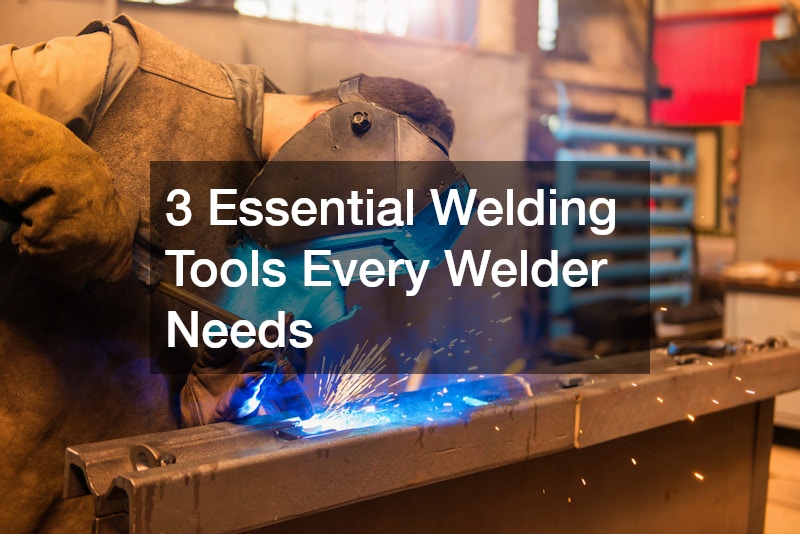Whether you’re a seasoned professional or a beginner in the world of metalwork, having the right welding tools is critical to achieving quality results and maintaining safety. Welding is a process that demands precision, control and the appropriate gear, and without these essentials, the job can quickly become more difficult than it needs to be.
Why the Right Welding Tools Matter
Welding involves extreme temperatures and potentially hazardous materials, making tool selection a vital part of both safety and performance. A welder must not only be skilled in technique but also well-equipped to handle the demands of different metals and project types. Using the wrong equipment can lead to faulty joins, wasted time or worse, injury.
Beyond that, quality tools improve the overall welding experience. They help you work faster, more efficiently and with greater confidence. Whether you are doing structural steelwork, repairs or custom fabrications, having the proper gear ensures that your work is both strong and clean.
A Trustworthy Welding Machine
The foundation of every welder’s setup is the welding machine itself. It’s the core tool that generates the heat necessary to fuse metal. Different types of welding—such as MIG, TIG and stick—require machines designed to handle those specific processes. Beginners often start with a MIG welder for its ease of use while more advanced welders may prefer the precision of a TIG machine.
When choosing a welding machine, it’s important to consider factors like power source, amperage range and the types of materials you plan to work with. For home or light industrial use, a compact and portable machine may be ideal. For larger commercial projects, something with a higher output and duty cycle may be necessary. No matter the type, a reliable machine is the backbone of successful welding work.
Protective Gear That Goes Beyond Basics
While many focus on the machinery, personal safety should never be overlooked. Welding involves exposure to intense light, heat and flying debris. That’s why protective gear is one of the most essential aspects of a welder’s toolkit. A good auto-darkening welding helmet is not just a luxury—it’s a necessity. These helmets adjust to the brightness of the arc, protecting your eyes while allowing you to maintain clear vision.
Gloves, jackets and boots should be made from fire-resistant materials and offer both mobility and protection. Safety glasses should be worn underneath helmets for extra eye protection when grinding or chipping. Without proper gear, welders expose themselves to burns, eye damage and long-term health risks.
The Importance of a Quality Angle Grinder
An angle grinder may not seem directly related to welding at first glance, but it plays a vital role in preparation and finishing. Before welding, metal surfaces need to be cleaned of rust, paint or coatings to ensure a strong bond. After welding, the same tool is used to smooth joints, remove slag or polish the final product.
Angle grinders come in various sizes and power levels. For most welders, a medium-sized model offers the right balance between power and control. Choosing one with variable speed settings can offer greater flexibility for different tasks. The grinder’s discs should also be suited to the material you’re working on, whether it’s steel, aluminium or stainless.
Investing in the Right Tools Pays Off
Welding is as much about preparation and finish as it is about the weld itself. Each of the tools mentioned not only contributes to the final result but also affects your working speed, comfort and long-term satisfaction. When welders invest in reliable gear, they avoid downtime caused by equipment failure and reduce the risk of mistakes or accidents.
It’s also worth noting that well-maintained tools last longer and perform more consistently. Regularly checking and servicing your welding equipment helps ensure you’re always ready to take on your next project. For those working professionally, it can also boost reputation and reliability in the eyes of clients or employers.
Welding With Confidence and Efficiency
Every welding project is unique, yet the core tools remain the same. With a dependable welding machine, appropriate protective gear and a versatile angle grinder, welders can tackle a wide range of jobs with skill and safety. These essentials form the basis of a proper setup and allow you to focus on what really matters—producing strong, clean welds that stand the test of time.
Welding is more than just a trade—it’s a craft that combines technical skill with attention to detail. By choosing the right tools from the start, you build a foundation that supports learning, improvement and professional pride. Whether at home or on-site, the right equipment turns each job into an opportunity to do your best work.

